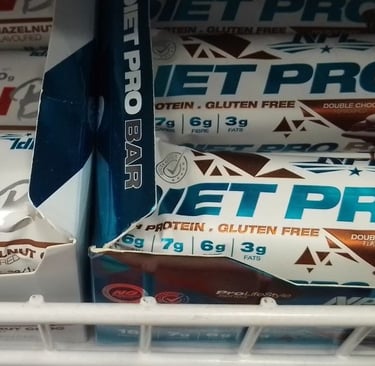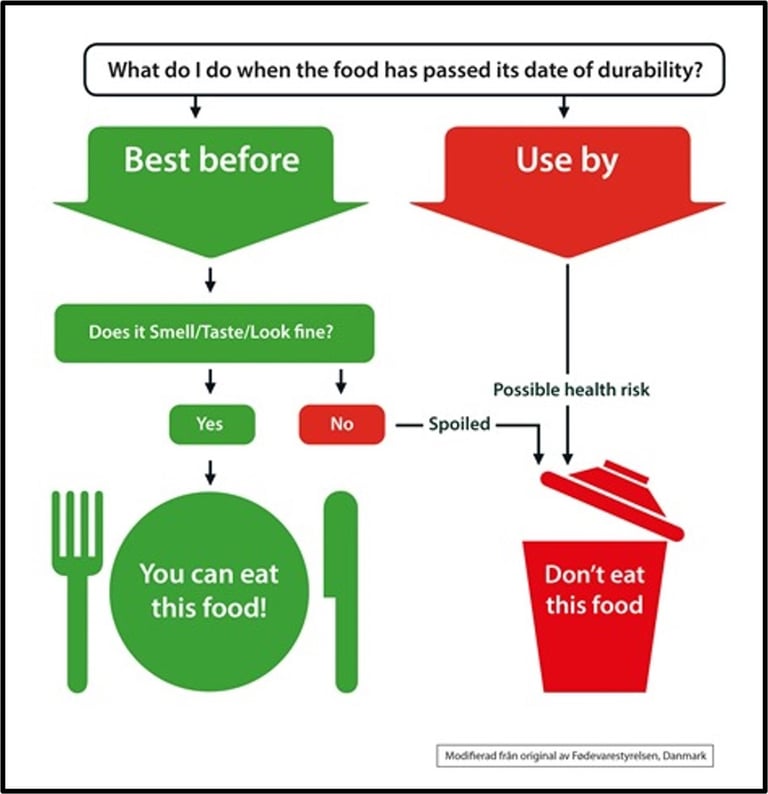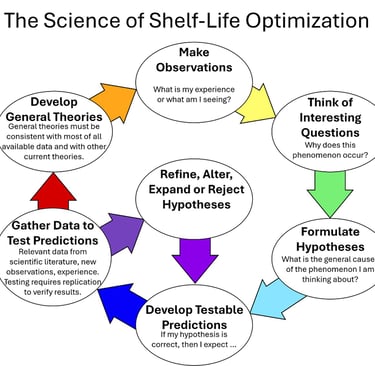Significance of Shelf Life in Food Development
Shelf life is defined as the storage time that a product remains safe to consume and retains its desired properties such as sensory, functional, chemical and microbiological properties.
11/6/20245 min read


Shelf life is defined as the storage time that a product remains safe to consume and retains its desired properties such as sensory, functional, chemical and microbiological properties.
Customers no longer rely on the traditional methods to dictate how to store them and have to solely depend on the manufacturer’s instruction. Regulations always require the manufacturer to to inform the consumer according to “the Standard requires packaged food, to be the date marked, and prohibits the sale of packaged food after the expiration of the use-by date”.
Consumers often substitute use-by date for best before date which is incorrect. Understated hygienic storage conditions, use-by date implies that the intact package of food should not be consumed after the mentioned date for health and safety reasons. On the other hand, the best before day implies the food product may start to deteriorate, such as loss of functionality, texture, color, taste or may develop an odor, after the mentioned date. This will, in turn, reduce the overall consumer acceptance and likability but may not have any health implications.
What is Meant By Shelf Life?
Shelf life refers to the duration, under specific storage conditions, within which food remains safe, maintains its desired taste, chemical composition, and physical attributes, and meets label specifications.
For foods that are stable in terms of microbes, like those kept at room temperature or frozen, oxidative reactions often dictate the end of their shelf life. Quality is a constantly changing state, gradually declining, so the shelf life of these products hinges on how quickly oxidation occurs and reaches an unacceptable level. This ‘acceptability limit’ denotes the point at which the food becomes unfit for consumption.
Shelf life holds various meanings: to consumers, it’s the timeframe indicated on the best-before label, signifying how long they can keep the food before disposing of it. It indicates when the food is no longer suitable for consumption. Yet, shelf life can also denote the duration a food item can be stored and exhibited while still retaining acceptable quality or specific functions.
Passing the shelf-life date doesn’t instantly render a product unsafe; rather, it means it no longer meets predefined quality standards. Some well-preserved products, like pasteurized milk, can stay fresh beyond their shelf life if stored properly and uncontaminated by bacteria. However, for certain items where bacterial growth can occur, consuming them past their shelf life could pose health risks, leading to foodborne illnesses. Such products usually have set shelf life and expiry dates to align.
Factors Impacting Shelf Life
Conducting shelf life studies encompasses a holistic assessment, taking into consideration the intrinsic (related to the product) and extrinsic (external) conditions that influence a product’s shelf life. Understanding these intrinsic and extrinsic properties aids in assessing the precise point at which a product surpasses its optimal state.
Intrinsic Factors
1. Ingredient Quality: The quality, consistency, and storage of ingredients significantly influence the final product. Microbiological variations in ingredients can impact safety and shelf life.
2. Formulation/Composition: The combination of ingredients determines the growth of spoilage organisms. Changes in proportions or ingredients can affect shelf life; some microorganisms can outgrow pathogens, spoiling the product before it becomes unsafe.
3. Water Activity (aw): The amount of water available to microorganisms is critical. Certain ingredients and processing methods affect aw, influencing pathogen growth and product quality.
4. pH Level: Acidity or alkalinity influences microorganism growth. Most pathogens are inhibited below a pH of 4.6, while spoilage organisms like yeasts and molds are acid-tolerant.
5. Preservatives: Additives control microorganism growth, extending shelf life. For instance, nitrates in meat products inhibit spoilage.
Extrinsic Factors
1. Processing: Methods like high-pressure processing affect shelf life, increasing durability, and safety.
2. Oxygen Availability: Altering air around food via vacuum or modified atmosphere packaging extends shelf life by limiting microbial growth.
3. Packaging Materials: Packaging safeguards food from contamination and can determine expected shelf life, relying on specific characteristics like light barriers.
4. Storage Conditions: Temperature, humidity, light exposure, and protection from contaminants impact microbial growth. Refrigeration slows some microorganisms but not all pathogens.
5. Distribution Chain: Handling and storage during distribution affect shelf life, especially considering temperature fluctuations.
6. Consumer Practices: While outside a manufacturer’s control, consumer practices impact shelf life. Instructions for proper storage and handling of labels are crucial.
Comprehending and managing these components for deciphering the shelf life assists in examining and maintaining the intended taste and quality of the food, preservation of its microbial, chemical, and physical properties, and sustaining its freshness and adherence to nutritional specifications.


Understanding Shelf Life Studies
Shelf life studies evaluate how a food product reacts to both intrinsic and extrinsic factors. They serve to provide documented proof required for demonstrating to both retailers and regulators that the food maintains freshness, taste, nutritional value, and quality until the expiration of the “best before” date on the unopened package, given proper storage conditions. This information also guides manufacturers to comply with food safety and quality standards efficiently, reducing waste, and enhancing consumer trust. The following approaches are frequently employed to conduct a food shelf life assessment:
Direct or Real-time Study
In a real-time shelf life study, food is stored under standard conditions for a duration surpassing the estimated shelf life. Regular evaluations ascertain the food’s condition, identifying the point when it loses its expected quality, nutritional value, and physical integrity.
Indirect or Accelerated Shelf Life Study
In an accelerated shelf life study, predictive techniques using factors like increased temperatures hasten the food’s deterioration process to estimate its shelf life more rapidly. Data gathered from accelerated deterioration measurements, such as microbial content, can be used in mathematical models to predict spoilage rates and bacterial growth under typical conditions.
Accelerated studies are often preferred for foods with extended shelf lives. However, a comprehensive understanding of the food’s formulation and properties is necessary to accurately interpret the data.
Validation is crucial for ensuring the appropriateness and effectiveness of indirect studies in predicting shelf life. Concurrent real-time and indirect studies, known as dual studies, aid in validating the anticipated shelf life. Accelerated stability testing typically involves storing products at high temperature / humidity / light intensity or similar. Products are tested following storage for different times and conditions. For some products, tests other than those used for routine quality control might be required. The calculations to convert the results of testing into an estimated shelf life are complex. Some businesses will require the services of a consulting chemist to supervise the studies.
F&B Excel has pioneered the method of Shelf Life Optimisation for growing food businesses.
Optimising shelf life involves analysis of the product to predict shelf life. Therefore it is important to consider science based analysis using a reputable food laboratory. This can save you time and money and give your important data that can showcase your high quality product. This is a simple guide on the important tests a lab can conduct:
1. Water Activity [Aw]
2. Aerobic plate count.
3. Yeasts & Molds.
4. Acidity pH (beverages) and changes over time.
5. Organoleptic defects
What changes can occur during storage?
• rancidity
• texture changes
• moisture loss
• moisture gain
• staling
• flavour loss
• light induced changes
• enzymatic browning
• chemical browning, and
• microbial spoilage.

